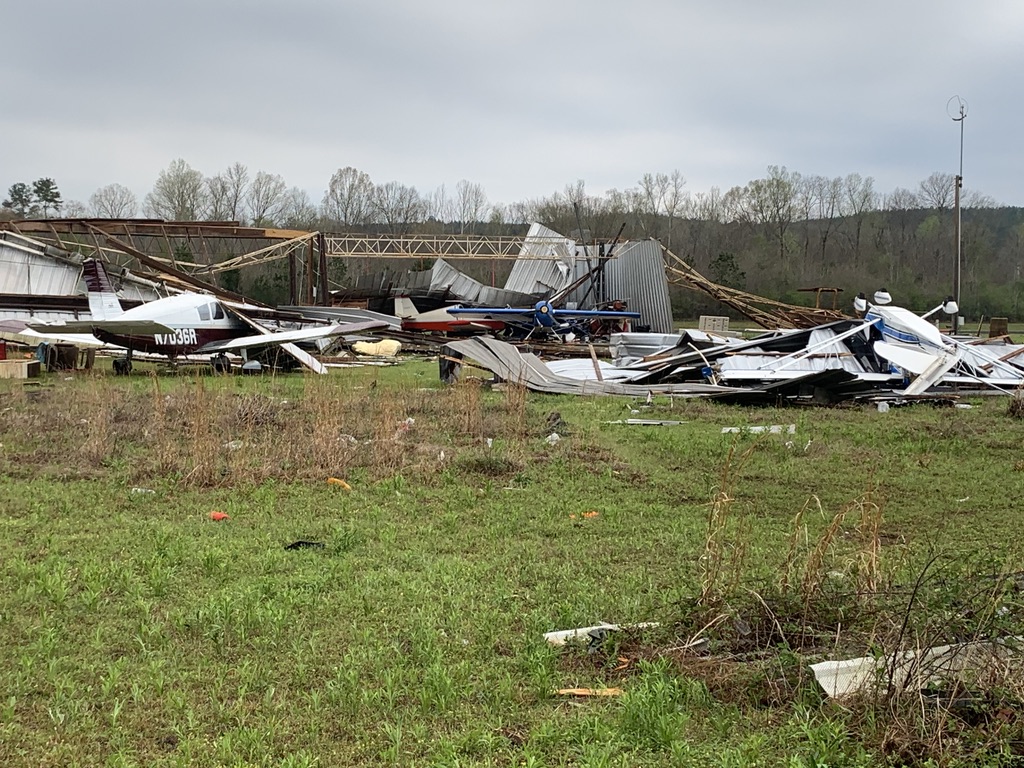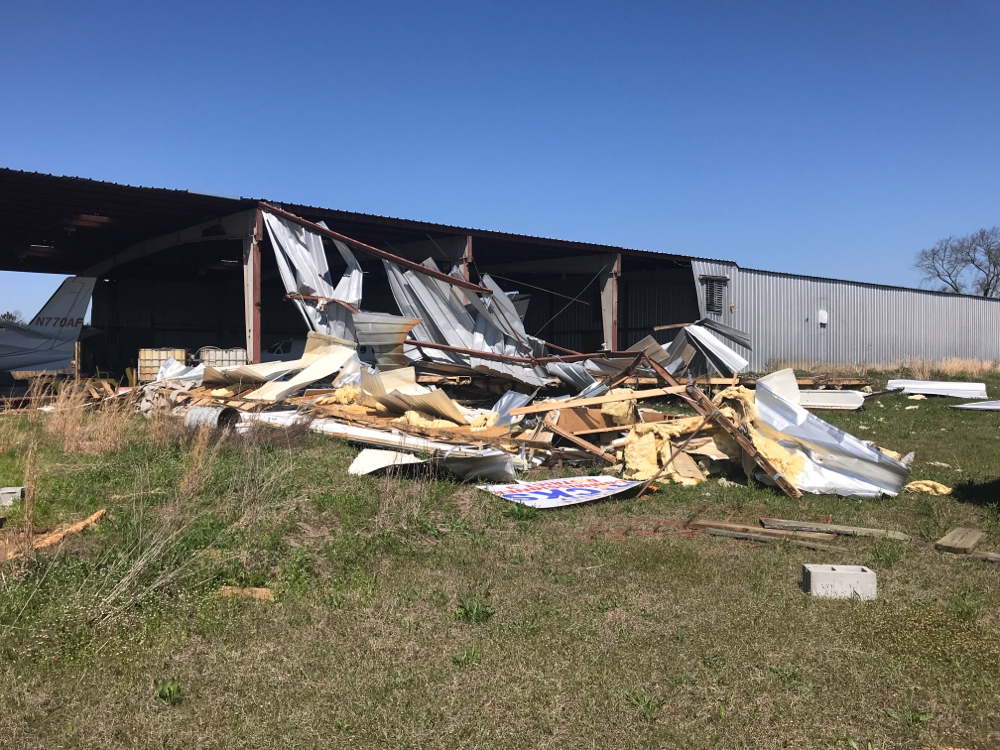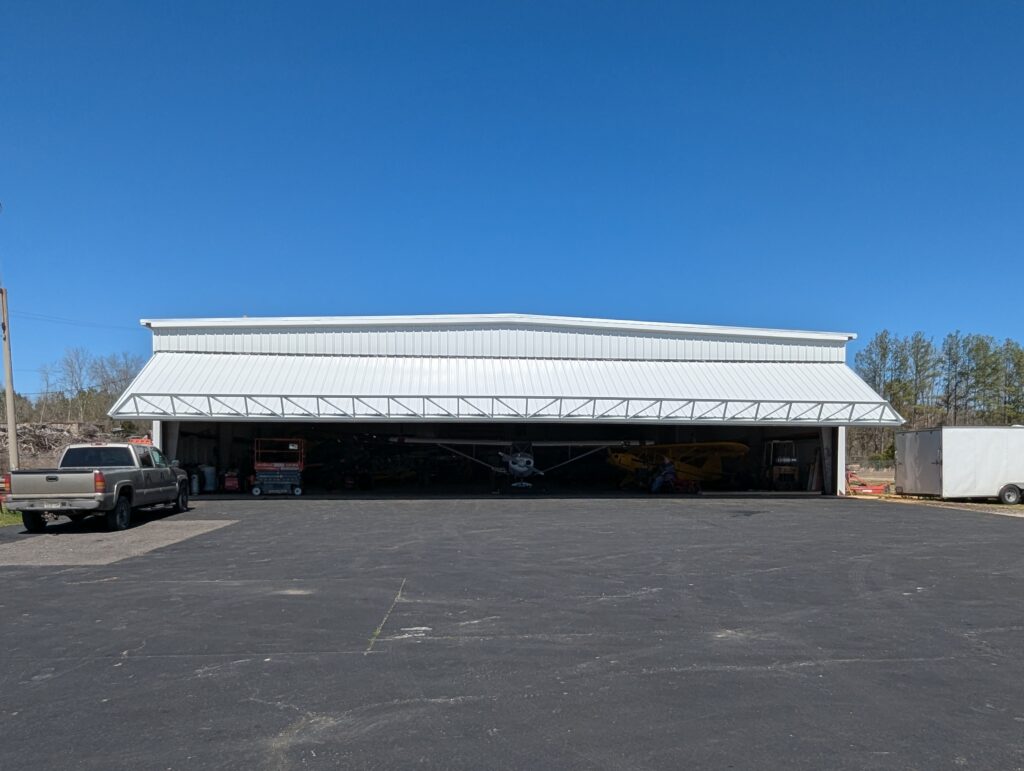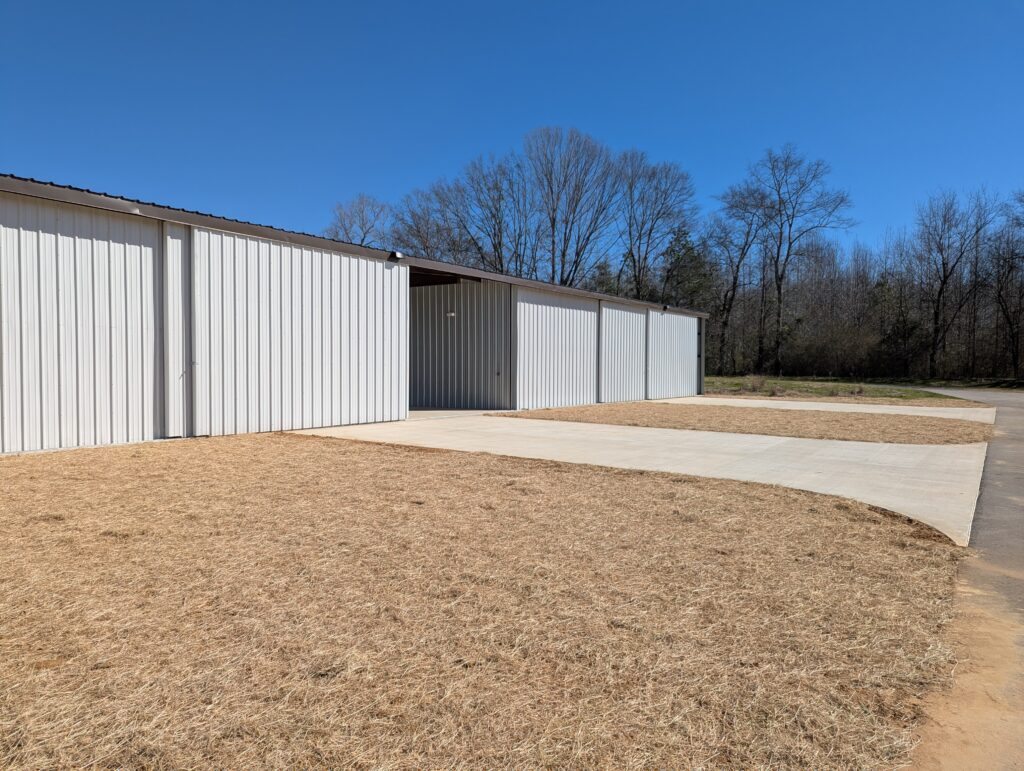How GMC’s aviation and disaster recovery teams transformed Bibb County Airport for good.
On March 25, 2021, an EF-3 tornado tore through Bibb County, Alabama, leaving devastation in its wake. Many residents had never seen damage like this in their hometown.
The Bibb County Airport took a major hit, with all of the hangars at the general aviation airport being destroyed and a majority of aircraft left unflyable. A small airplane was even left dangling in a nearby tree. The airport seemed like a total loss.
The destruction was devastating for the small community, as the airport serves as an integral part of its economic development. The income-generating hangars were demolished, and those who stored aircraft there were uncertain if they would ever be able to fly again.


As a main source of revenue for operations, a severely damaged large corporate hangar and a destroyed smaller T-hangar were detrimental to the airport. To maintain eligibility for the Federal Aviation Administration (FAA) Airport Improvement Program funding, the airport must maintain at least 10 based aircraft in the hangars. It was clear that rebuilding these facilities was an immediate priority.
Picking up the pieces
Once the dust settled, it was time to get to work.
The airport’s original structures, built in the ’70s and ’80s, were overdue for replacement. Airport and community leaders were determined to rebuild.
Airports are often susceptible to storm damage due to the numerous sheet metal structures and the nature of aircraft being designed to take flight. After assessing the damage, airport leaders concluded the larger hangar could be restored but needed a new, stronger door. On the other hand, the smaller hangar would have to be completely rebuilt to withstand future similar weather events.
As the airport’s consultant of record and trusted partner, airport leadership looked to Goodwyn Mills Cawood (GMC) to help them rebuild.
Being a multidisciplined firm, GMC possesses diverse expertise to serve clients and communities in many different ways.
A helping hand
When recovering from this type of disaster, it’s important to have an expert in your corner. In this instance, GMC’s disaster recovery team was brought in to assist, having integral knowledge on how to navigate federal and state funding reimbursements. The DR team worked with Bibb County to apply for emergency grant funding through FEMA and AEMA (Alabama Emergency Management Agency) to replace the destroyed hangars with not only new, but more resilient facilities.
A self-supporting hydraulic door was added to the large hangar to protect against future wind damage. The team gained FEMA’s support and secured the funding through its Hazard Grant Mitigation Program (HGMP), which supports communities looking to protect against losses from disasters, and in advance of disasters.
A new, eight-bay T-hangar, designed to withstand 115 mph winds, replaced the existing smaller building and was funded by both FEMA programs, reimbursement of in-kind replacement, with an additional 100% of in-kind replacement estimates for hazard mitigation funding.


In addition, Bibb County will be able to upgrade its former pre-manufactured storage building to a permanent facility, providing the airport with storm-resistant storage space that will serve them well for years to come.
On top of the damage done at their airport, the tornado also hit the rest of the community hard. Working closely with Bibb County, GMC’s disaster recovery team was able to get $4 million reimbursed from FEMA for an estimated 120,000 cubic yards of debris removal.
A resilient community
The airport went from a total loss to the pride of the community. By collaborating with community leaders and utilizing their strengths, GMC’s disaster recovery and aviation teams were able to help not only the airport but also the surrounding community recover after a devastating event. As a result, Bibb County residents now have a more resilient airport and a stronger place they call home.